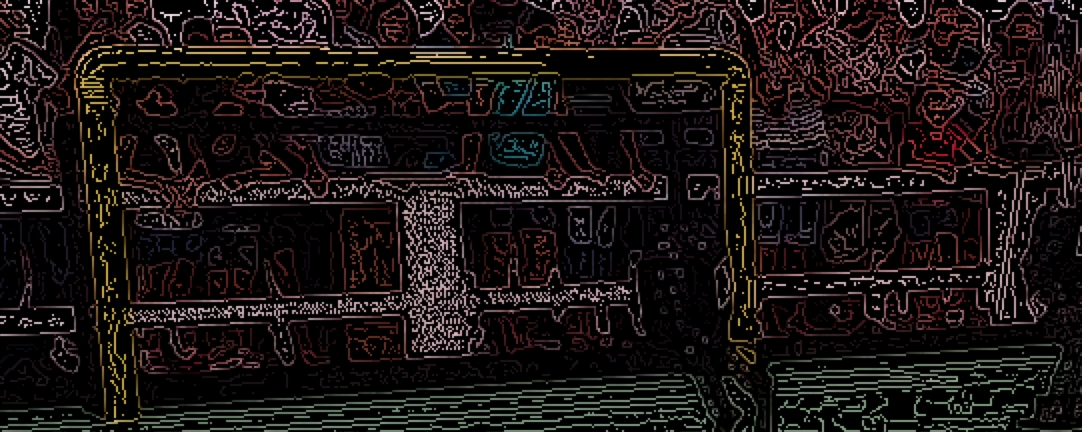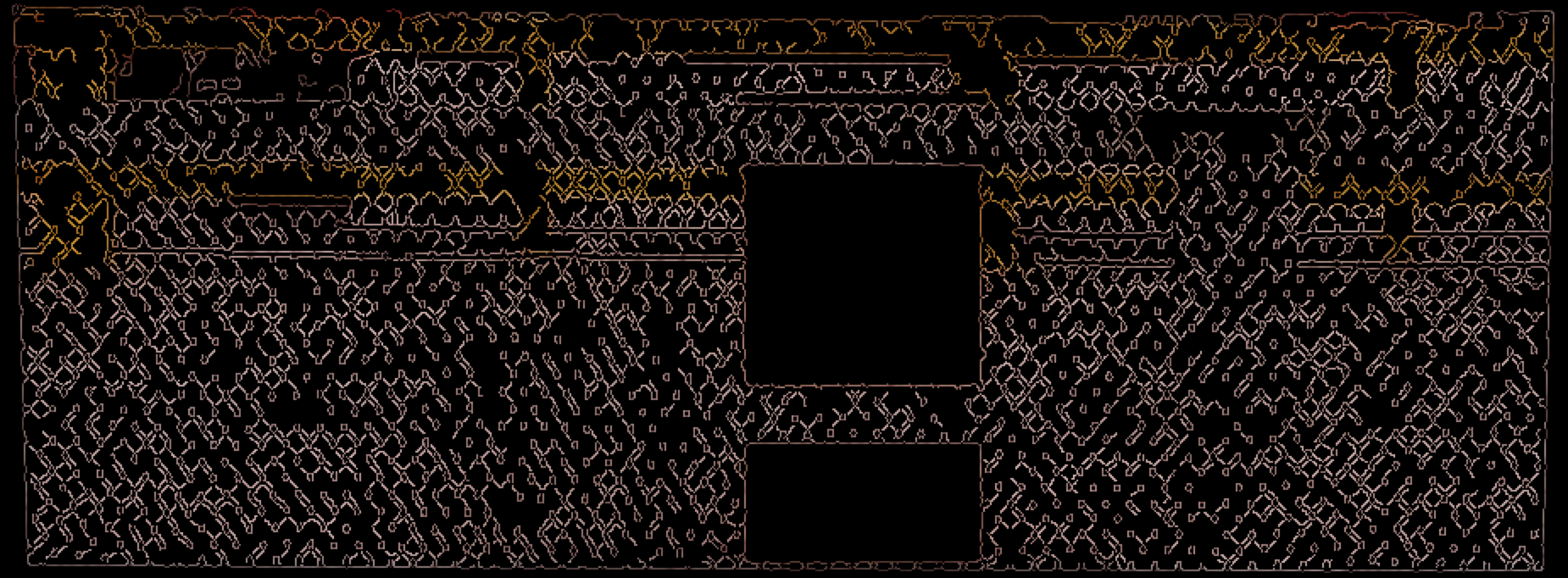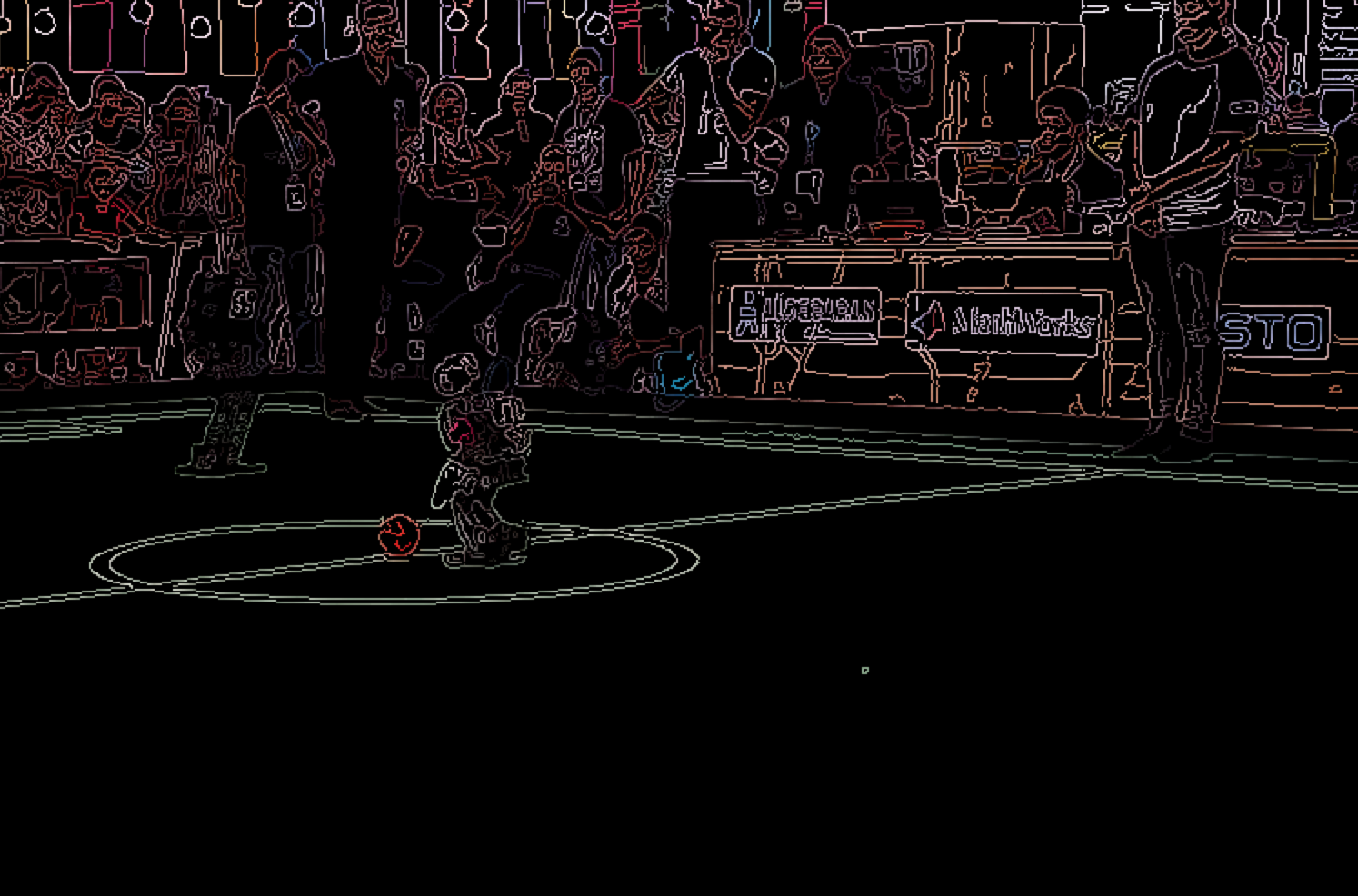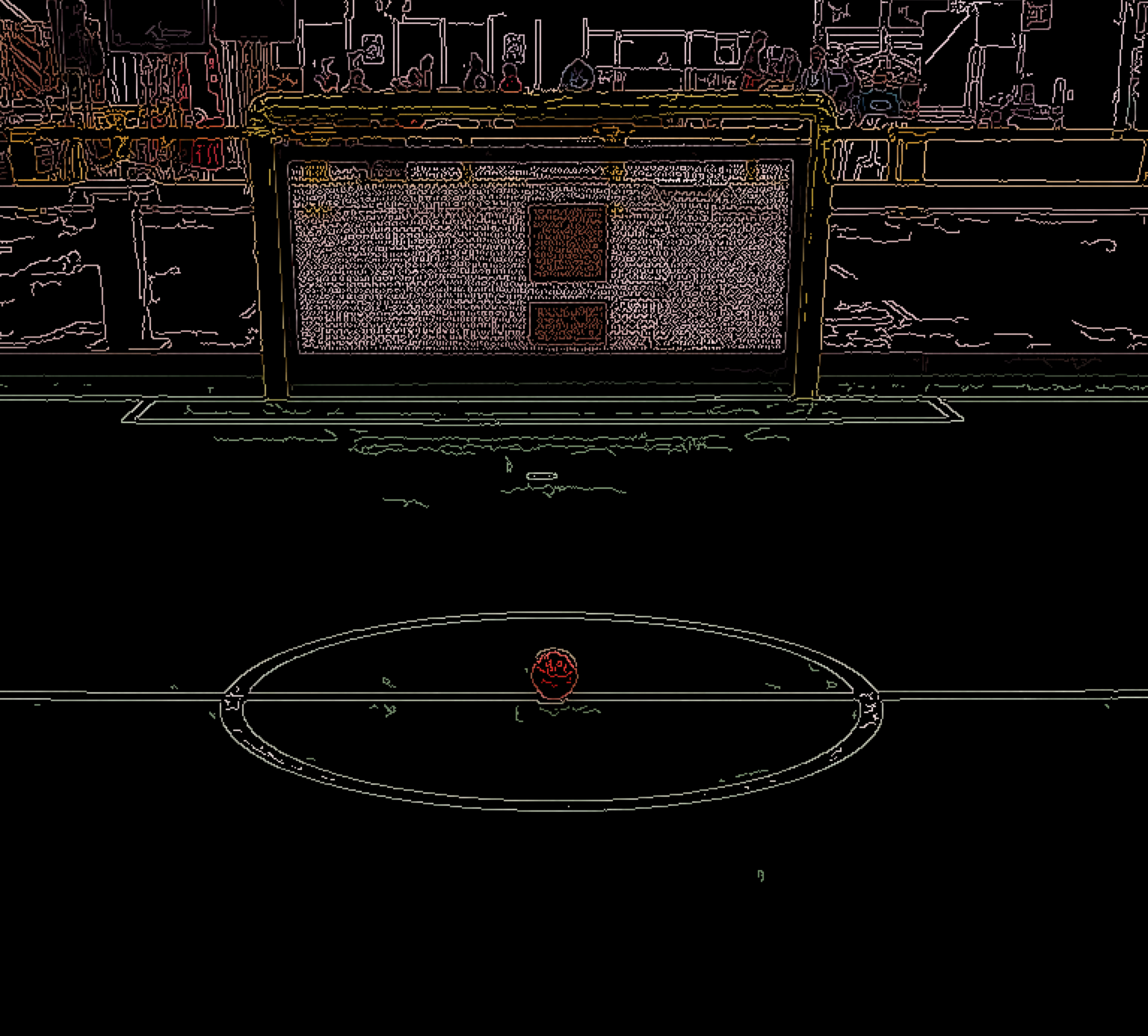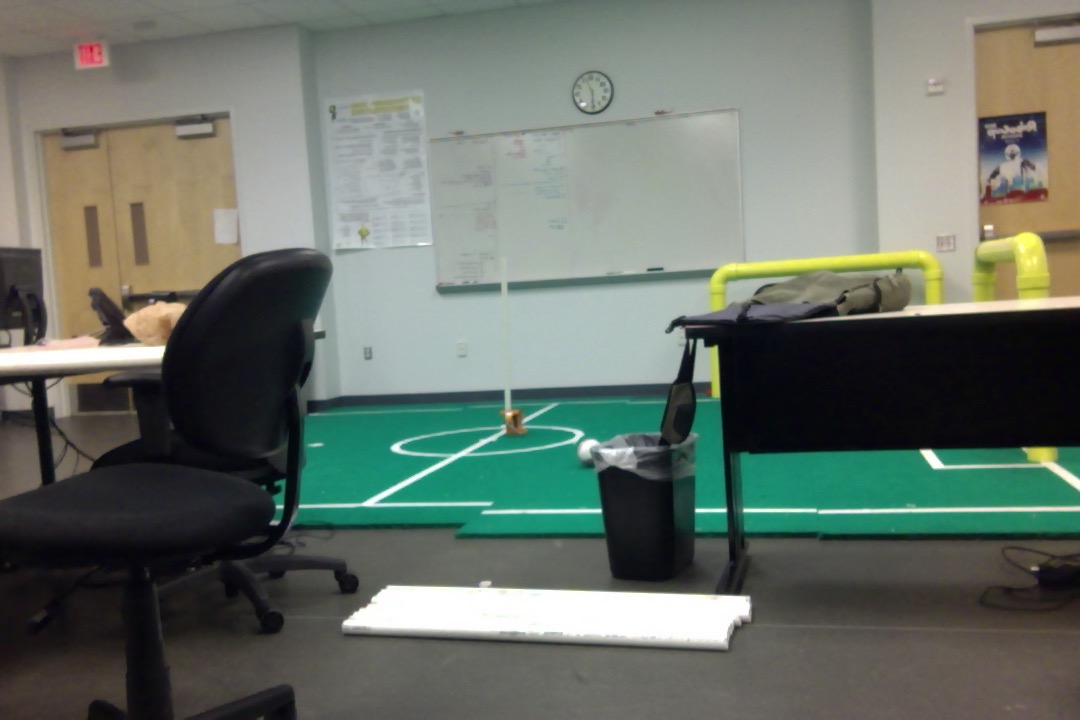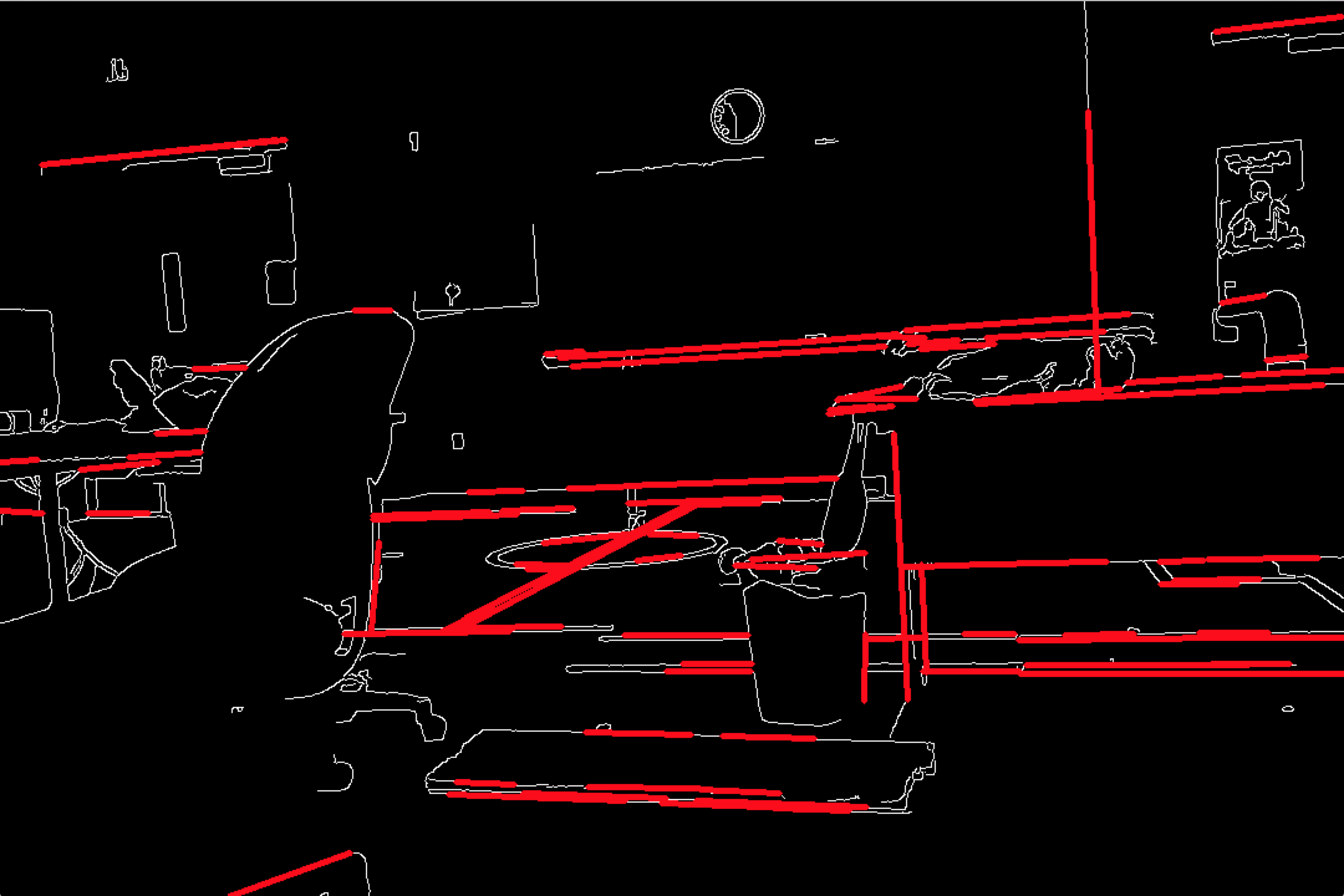So, I grabbed some images from robocup 2014 that we took of the goal with the netting. One has no people behind it and the other had people behind it. I ran both Canny and Hough on it to see if the netting would stand out.
Canny with people behind the net:
Then just to show that this pattern just doesn’t show up everywhere I took a random sample of the image with some people:
And one without people which included the net:
So, it doesn’t look like the net will make the difference. So, what kind of algorithm will be able to see something even I can’t see?
